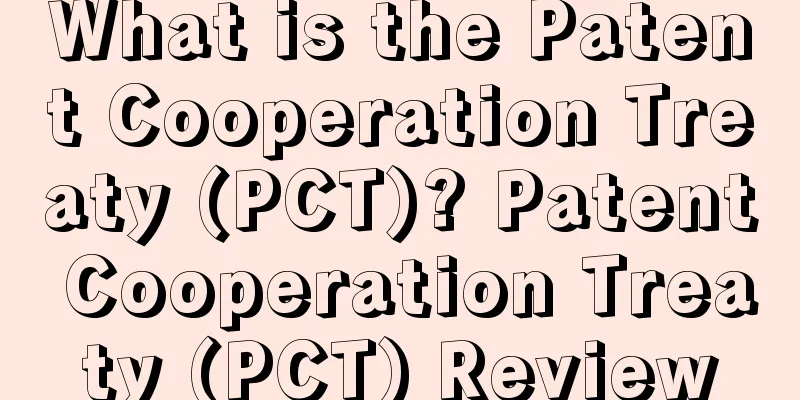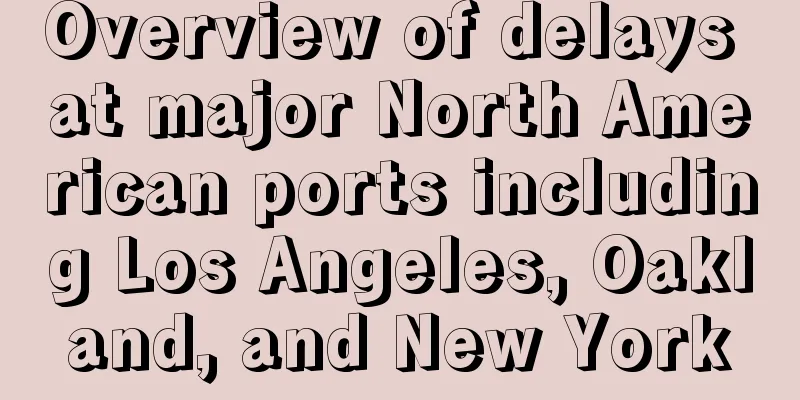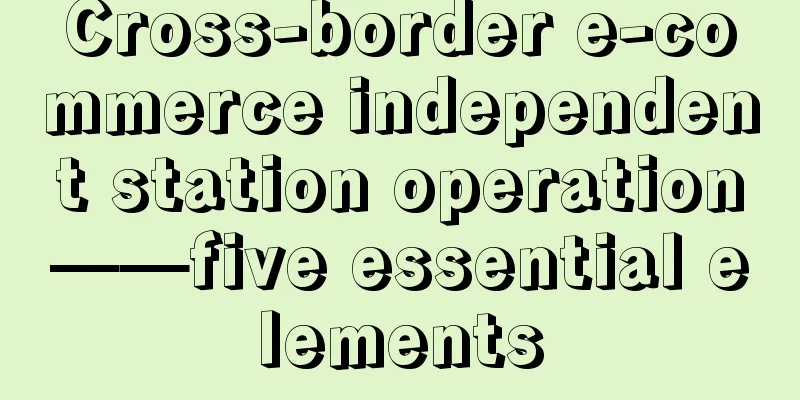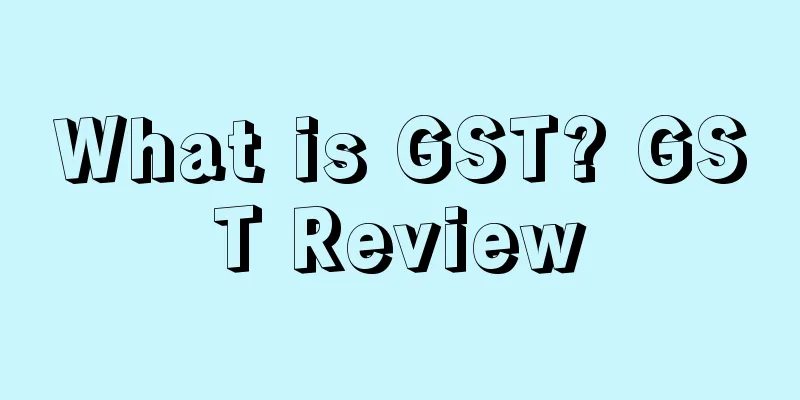What is the Patent Cooperation Treaty (PCT)? Patent Cooperation Treaty (PCT) Review

|
The Patent Cooperation Treaty (PCT) is the most important international treaty in the field of patents after the Paris Convention for the Protection of Industrial Property, and is another milestone in the development of the international patent system. Signed on June 19, 1970 Place of Signing: Washington Effective on June 1, 1978 The treaty was signed by 35 countries in Washington on June 19, 1970. It came into effect on June 1, 1978. There are 153 signatories to the Patent Cooperation Treaty, including most industrialized countries. Patent applications filed under the Patent Cooperation Treaty are called international applications or PCT applications. They are governed by the World Intellectual Property Organization, headquartered in Geneva. The Patent Cooperation Treaty has made internationally unified provisions for the acceptance and examination standards of patent applications. Within the scope of the member states, as long as the applicant submits an international application in one country using a prescribed language and specifies the countries in which patent protection is to be obtained in the application, it will have the effect of submitting a national patent application to each country separately. The application procedure stipulated in the treaty simplifies the procedures for applicants to apply for patents in multiple countries for the same invention, and also reduces the duplication of work of patent offices in various countries. The international application procedure is divided into the "international phase" and the "national phase". In the "international phase", the receiving office accepts international applications, and the international prosecution unit searches for existing technologies and submits an international search report. If the applicant requests a preliminary examination, the international preliminary examination unit examines whether the invention has novelty, creativity, and practicality, and submits an international preliminary examination report. If the applicant does not request an international preliminary examination within the prescribed time limit, the international application will enter the "national phase" within 20 months from the priority date. If an international preliminary examination is requested, it will enter the "national phase" within 30 months from the priority date. In the "national phase", the patent offices of various countries examine and approve patents in accordance with the conditions and procedures prescribed by their own laws. my country officially became a member of the Patent Cooperation Treaty on January 1, 1994. According to the treaty, when a country joins the treaty, its patent office automatically becomes a receiving office. The treaty also stipulates the conditions for becoming an international search unit and an international preliminary examination unit. A country's patent office must meet the conditions and be designated by the treaty union assembly to serve as an international search and international preliminary examination unit. At present, the Chinese Patent Office has become the receiving office of the PCT and the international examination unit for international searches. Chinese has become the working language of the PCT. my country's accession to the PCT has accelerated the integration of my country's intellectual property system with the international community, marking an important step for my country's intellectual property system to move toward international standards. It will have a positive impact on the continuous improvement and development of my country's patent system, the deepening of reform, the expansion of opening up, and the development of scientific and technological, economic and trade exchanges with other countries. Treaty Overview The PCT was concluded in 1970, amended in 1979, and revised in 1984 and 2001. The PCT is open to States party to the Paris Convention for the Protection of Industrial Property. Instruments of ratification or accession must be deposited with the Director General of WIPO. Through the treaty, applicants can simultaneously seek patent protection for inventions in each of a large number of countries by filing a single "international" patent application. Such applications may be filed by anyone who is a national or resident of a contracting state. Applications are generally filed with the national patent office of the contracting state of which the applicant is a national or resident, but applicants may also choose to file with the International Bureau of WIPO in Geneva. International applications may also be filed with the European Patent Office, the African Regional Industrial Property Organization, the African Intellectual Property Organization or the Eurasian Patent Office if the applicant is a national or resident of a contracting state to the European Patent Convention, the Harare Protocol on Patents and Industrial Designs, the revised Bangui Agreement relating to creation of the African Intellectual Property Organization or the Eurasian Patent Convention, respectively. The international application is then subject to a so-called "international search". This search is conducted by one of the main patent offices designated by the PCT Assembly as an International Searching Authority (ISA). This search results in an "International Search Report", which contains extracts from published documents that may have an impact on the patentability of the invention claimed in the international application. At the same time, the International Searching Authority prepares a written opinion on patentability. The International Searching Authority will notify the applicant of the international search report and written opinion, and the applicant may decide to withdraw the application, especially if it is highly likely that a patent will not be granted based on the report or the opinion. If the international application has not been withdrawn, it will be published by the International Bureau together with the international search report. benefit The PCT procedure provides significant benefits to applicants, patent offices and the general public: (i) The applicant has 18 months longer than he does in non-PCT procedures to consider whether he wishes to seek protection in foreign countries, appoint a local patent agent in each foreign country, prepare necessary translation materials and pay national fees; he can be sure that as long as his international application is filed in the form prescribed by the PCT, no designated office will reject the application on formal grounds during the national phase of processing the application; he can also assess with greater confidence the chances of his invention being granted a patent based on the international search report or written opinion; the applicant can also make amendments to the international application during the international preliminary examination to make the application meet the requirements before it is processed by the designated office; (ii) With the international search report, written opinion and, where applicable, international preliminary examination report attached to the international application, the labor intensity of search and examination work in each patent office can be greatly reduced or even eliminated; (iii) Since every international application is published together with an international search report, third parties are also in a better position to form a well-founded opinion on the patentability of the claimed invention. Application Procedure International patent applicants only need to file an application once in a contracting state in a prescribed language. If the application specifies the countries where patent protection is required, it will have the effect of filing patent applications in these countries separately. When applying for PCT, it first goes through the mandatory national/regional examination stage and then is directly checked by the international agency. The application is accepted by the Receiving Office (RO), and then the International Searching Authority (ISA) searches for existing patents and issues an international search report, with a written opinion on the patentability of the application. As an optional procedure, international patent applicants can also request the International Preliminary Examining Authority (IPEA) to issue a preliminary examination report. Finally, the grant of patent rights is decided by the patent office of the country/region (i.e. the country/region where patent protection is required in the international patent application) in accordance with the substantive and procedural requirements of domestic law. Legal status of patents obtained through the PCT The Patent Cooperation Treaty does not create an "international patent" that is used in all countries. The granting of patent rights still needs to be resolved through domestic laws, and the granted patent rights are also territorial. The Patent Cooperation Treaty provides a platform for the patent application process in multiple countries to reduce the tedious labor of repeated applications and improve application efficiency. Treaty Directory Preface Xu Ze Article 1 Formation of the Alliance Article 2 Definitions Chapter I International Application and International Search Article 3 International Application Article 4 Request Article 5 Instructions Article 6 Claims Article 7 Attachments Article 8 Claiming priority Article 9 Applicants Article 10 Receiving Office Article 11 Filing Date and Effects of the International Application Article 12 Transmittal of the International Application to the International Bureau and the International Searching Authority Article 13 Copies of the International Application to Designated Offices Article 14 Certain Defects in the International Application Article 15 International Search Article 16 International Searching Authority Article 17 Procedure before the International Searching Authority Article 18 International Search Report Article 19 Amendment of Claims before the International Bureau Article 20 Communication to Designated Offices Article 21 International Publication Article 22 Copies, Translations and Fees to Designated Offices Article 23 Postponement of national proceedings Article 24 may lose its effect in designated countries Article 25 Review by Designated Offices Article 26 Opportunity to Correct Before the Designated Office Article 27 National requirements Article 28 Amendment of Claims, Description and Drawings before a Designated Office Article 29 Effect of international publication Article 30 Confidentiality of the International Application Chapter II International Preliminary Examination Article 31 Requirement for International Preliminary Examination Article 32 International Preliminary Examining Authority Article 33 International Preliminary Examination Article 34 Procedure before the International Preliminary Examining Authority Article 35 International Preliminary Examination Report Article 36 Transmittal, Translation and Communication of International Preliminary Examination Report Article 37 Withdrawal of Demand or Election for International Preliminary Examination Article 38 Confidentiality of the International Preliminary Examination Article 39 Copies, Translations and Payment of Fees to Elected Offices Article 40 Postponement of national examination and other proceedings Rule 41 Amendment of Claims, Description and Drawings before Elected Offices Article 42 Results of National Examination by Elected Offices Chapter III Common Provisions Article 43 seeks certain kinds of protection Article 44 seeks two kinds of protection Article 45 Regional Patent Treaties Article 46 Incorrect Translation of the International Application Article 47 Time limit Article 48 Delay in meeting certain deadlines Article 49 Right to Perform Practice before an International Authority Chapter 4 Technical Services Article 50 Patent Information Service Article 51 Technical Assistance Article 52 Relationship with other provisions of this Treaty Chapter V Administrative Provisions Article 53 Assembly Article 54 Executive Committee Article 55 International Bureau Article 56 Technical Cooperation Committee Article 57 Finance Article 58 Implementing regulations Chapter VI Disputes Article 59 Disputes Chapter VII Revision and Amendment Article 60 Revision of this Treaty Article 61 Modification of Certain Provisions of this Treaty Chapter 8 Final Clauses Article 62 Accession to this Treaty Article 63 Entry into Force of this Treaty Article 64 Reservation Article 65 Progressive application Article 66 Withdrawal Article 67 Signature and language Article 68 Duty of custody Article 69 Notification References
|
<<: What is Alibaba Cloud? Alibaba Cloud Review
>>: What is Chinabrands? Chinabrands Review
Recommend
How to set up Amazon social media discount codes
text Step 1 : Create a social media discount code ...
Amazon's new advertising policy is coming! Brother-in-law wants to reap the profits
Cross-border Business School Information and skil...
What is Youfen? Youfen Review
Youfen is a SCRM system that provides a one-stop s...
Another best seller is coming soon? Response to Amazon’s account suspension: No violation!
▶ Video account attention cross-border navigation ...
What is PhonePe? PhonePe Review
PhonePe is a mobile payment company that has devel...
What is Pinkman Cross-border Services? Pinkman Cross-border Services Review
Pinkman Cross-border Services is composed of a tea...
What is 1688 Cross-border Special Supply? 1688 Cross-border Special Supply Review
1688 Cross-border Exclusive Supply is a cross-bord...
Amazon operation skills: registration and precautions for in-site flash sales
Amazon's Today's Deal feature is very pop...
Amazon's best seller announced the cessation of operations! Is there a "wave of closures" in the home furnishing industry?
Affected by the Federal Reserve's interest rat...
FBA is free! Just now, Amazon officially announced...
With only 7 days left before the new year, Amazon...
Market value of $21.5 million speculation! Bed Bath & Beyond implements business revitalization strategy!
It is learned that Bed Bath & Beyond is a well...
Shopify sued for improper collection of user data! Demands compensation for economic losses
It is learned that according to foreign media repo...
In the early morning of May 11, a large number of sellers received suspension emails for illegal variants! Is there a possibility of misjudgment? How to solve this problem?
Mumu My C position Receiving an Amazon Violation V...
What is Amazon Brand Gating? Amazon Brand Gating Review
Amazon Brand Gating is the most effective way to p...
32% of Americans shopped online in December! Food and grocery categories saw the strongest spending!
<span data-shimo-docs="[[20,"获悉,根据市场研究机构PY...









